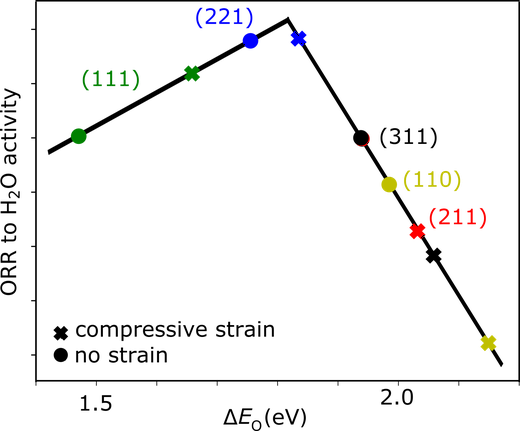Strained Pt(221) Facet in a PtCo@Pt-Rich Catalyst Boosts Oxygen Reduction and Hydrogen Evolution Activity

Abstract
Over the last years, the development of highly active and durable Pt-based electrocatalysts has been identified as the main target for a large-scale industrial application of fuel cells. In this work, we make a significant step ahead in this direction by preparing a high-performance electrocatalyst and suggesting new structure-activity design concepts which could shape the future of oxygen reduction reaction (ORR) catalyst design. For this, we present a new one-dimensional nanowire catalyst consisting of a L10 ordered intermetallic PtCo alloy core and compressively strained high-index facets in the Pt-rich shell. We find the nanoscale PtCo catalyst to provide an excellent turnover for the ORR and hydrogen evolution reaction (HER), which we explain from high-resolution transmission electron microscopy and density functional theory calculations to be due to the high ratio of Pt(221) facets. These facets include highly active ORR and HER sites surprisingly on the terraces which are activated by a combination of sub-surface Co-induced high Miller index-related strain and oxygen coverage on the step sites. The low dimensionality of the catalyst provides a cost-efficient use of Pt. In addition, the high catalytic activity and durability are found during both half-cell and proton exchange membrane fuel cell (PEMFC) operations for both ORR and HER. We believe the revealed design concepts for generating active sites on the Pt-based catalyst can open up a new pathway toward the development of high-performance cathode catalysts for PEMFCs and other catalytic systems.